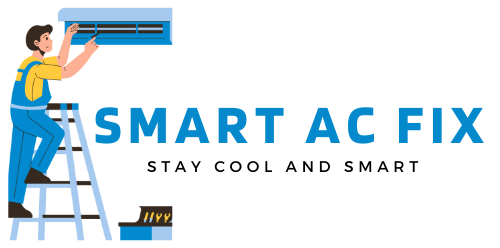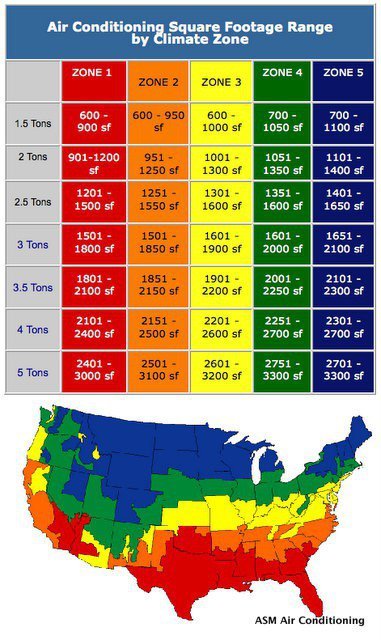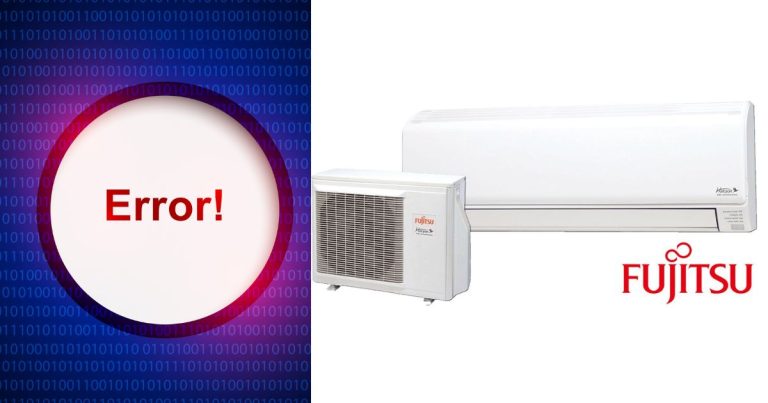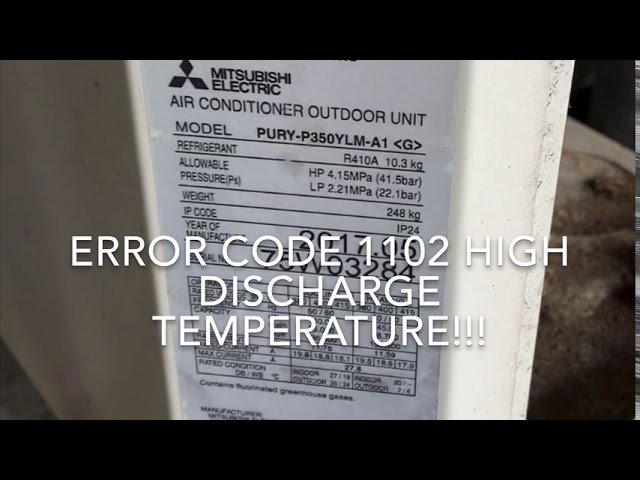Why Does My Ac Smell Like Sewer? Uncover The Causes And Find Solutions
There are several possible reasons why your AC may smell like a sewer. Some potential causes include: 1. Clogged condensate drain: A blockage in the drain pipe can lead to stagnant water and a foul smell. 2. Mold or mildew growth: Moisture buildup in the AC unit can promote the growth of mold or mildew, resulting in an unpleasant odor. 3. Dead animals: Occasionally, small animals can find their way into the AC unit and perish, causing a sewer-like smell. 4. Sewer gas leak: In rare cases, there may be a leak in the sewer line that is being pulled into the AC system, causing the odor. 5. Dirty air filters: Accumulated debris on the air filters can create an unpleasant smell when the AC is running.
Beads of perspiration form on your forehead as you step into your cool sanctuary, seeking respite from the sweltering summer heat. But as the refreshing blast of air from your air conditioning system fills the room, an unwelcome stench lingers, invading your nostrils.
The overpowering smell, reminiscent of a sewer, sends waves of discomfort and concern through your mind. You’re not alone in this puzzling predicament.
Though your AC may seem like an unlikely culprit, the truth is, foul odors emanating from air conditioning units are not uncommon. It can be disconcerting to experience such a repugnant smell in the one place you go to escape the outside world. But fear not, for there are answers, solutions, and relief on the horizon.
In this article, we unravel the mystery behind why your AC smells like a sewer. Whether you’re a homeowner, renter, or simply someone curious about HVAC systems, understanding the causes behind this unpleasant odor is vital for ensuring the cleanliness and comfort of your indoor spaces. Join us as we explore the various culprits behind the scent and equip you with the knowledge to banish it for good.
Understanding the HVAC system is crucial in unraveling the mystery behind why your AC smells like a sewer. By delving into the components, roles, and maintenance of an HVAC system, we can identify the common causes of sewer-like odors and find effective solutions. Let’s dive in!
I. Understanding the HVAC System
- Support Local: By choosing Ash Harbor, you’re supporting a US-based, family-owned small business backed by the SBA. Enjoy trusted quality and exceptional service with every order
- Clean and Cozy – Boost your home or office atmosphere as you deodorize with a pack of 4 aromatic air-vent scents for home. Cultivate cohesive, relaxing spaces using Ash Harbor HVAC filter fresh scents
- Install and Enjoy – It’s that simple. Just attach 1 AC air freshener to your air filter and experience refreshing aromatherapy without a flame or messy spray. Use 2 pads for 2000+ sq. ft. homes
- A Retreat for the Senses – Whisk yourself away to a lavish oasis every time you enter a room. Each HVAC air freshener for the air conditioner filter emits an appealing, balanced aroma for 2-4 weeks
- Vibrant Variety – Enjoy a thoughtful selection of vent air fresheners for home that complement any mood or season—warm vanilla, lively green tea matcha, floral tropical spa, or herbal luxury hotel
- Amazon Kindle Edition
- Robinson, Matt (Author)
- English (Publication Language)
- 13 Pages – 11/27/2019 (Publication Date)
- Customized For Tesla: This car scent is suitable for Tesla, include Model S, X, 3, Y 2021 2022 2023 2024. Specially suitable for Model 3 & Model Y, because we customized special clamps so that they can be fastened to the vents. *Not fits for Model 3 Highland car type, please choose exclusive link for purchasing
- Fragrance: (1) THREE smells: [Sea]x1; [Cologne] x1; [Random]x1. [Cologne] will smells very elegant and dignified and [Sea] will smells very fresh, comfortable and peaceful. [Random] Designated perfumes are accepted, but only for overseas direct mail packages.
- Durability: (1)The fragrance can last for 5-8 weeks, depending on the ambient temperature. (2) Soft Silicone Plug, Increase Stability, Do Not Damage The Air Outlet, Simple Installation, Stable And Do Not Fall.
- Install: For Model S and Model X, simply use the clip can fix them to your vent. For Model 3 and Model Y, cause your car doesn’t have air outlet fence, you need to combine the clip and with the customized base first then you can fix them to your vent. We offer two types of clips at the same time, for invisible and vertical stand up installation.
- [ 24/7 ] Sale Service: If you have any question ,please contact us , we will solve your problem honestly.
- Amazon Kindle Edition
- Roma, Maria (Author)
- English (Publication Language)
- 16 Pages – 12/16/2016 (Publication Date)
- Amazon Kindle Edition
- Stevens, Amy (Author)
- English (Publication Language)
- 17 Pages – 08/07/2019 (Publication Date)
- Printing, NW Sports & Hobbies (Author)
- English (Publication Language)
- 120 Pages – 02/26/2019 (Publication Date) – Independently published (Publisher)
- Amazon Kindle Edition
- Stevens, Amy (Author)
- English (Publication Language)
- 42 Pages – 09/08/2019 (Publication Date)
- Amazon Kindle Edition
- Stevens, Amy (Author)
- English (Publication Language)
- 16 Pages – 11/28/2017 (Publication Date)
- PERSONALIZED YOUR DECALS: Send us your images or photos and we’ll turn them into your products!
- Back adhesive for exterior application – Cut to Shape and Pre-masked with Transfer Tape
- You can use it to decorate laptops, computers, water bottles, hydroflask, scrapbooks, notebooks, journals, luggage, skateboards, snowboards, bicycles, cars, and more.
- This is a perfect decal to show off your unique personality and interests
- 100% SATISFACTION GUARANTEE: If you are not satisfied for any reason – please contact us for customer support. We want to make sure you are 100% happy with our products and we will do everything we can to ensure your needs are met.
- Amazon Kindle Edition
- Robinson, Matt (Author)
- English (Publication Language)
- 16 Pages – 03/12/2019 (Publication Date)
A. Introduction to HVAC systems
HVAC stands for Heating, Ventilation, and Air Conditioning. It refers to the technology and systems used to provide comfort and maintain indoor air quality in residential, commercial, and industrial buildings. HVAC systems not only regulate the temperature but also control humidity, provide ventilation, and filter the air.
B. Components of an HVAC system
An HVAC system consists of several components that work together to create a comfortable environment:
- 1. Heating Unit: This component generates heat, usually using gas or electricity, to warm the air during colder months.
- 2. Cooling Unit: This component, commonly known as an air conditioner, cools the air during hot weather by removing heat and moisture.
- 3. Air Handler: The air handler circulates the conditioned air throughout the building, distributing it through ductwork.
- 4. Ductwork: These are the pathways that deliver air to different rooms and return it back to the HVAC system.
- 5. Thermostat: This device allows you to control and adjust the temperature settings in your home or building.
- 6. Air Filters: These filters trap dust, pollen, and other airborne particles, improving indoor air quality.
- 7. Condensate Drain System: This system collects and removes the condensed water produced by the cooling process.
C. HVAC system’s role in maintaining indoor air quality
One of the essential functions of an HVAC system is to maintain indoor air quality. By continuously circulating and filtering the air, HVAC systems remove pollutants, allergens, and odors from the indoor environment. However, when the system malfunctions or accumulates dirt and debris, it can lead to unpleasant odors, including the dreaded sewer-like smell.
II. Common Causes of Sewer-like Odor from AC
Now that we have a basic understanding of HVAC systems, let’s explore the common causes of sewer-like odors emanating from air conditioning units. By identifying these causes, we can uncover the solutions and prevent the recurrence of these unpleasant smells.
A. Condensate Drain Line Issues
One of the primary reasons for your AC smelling like a sewer is issues with the condensate drain line. The condensate drain line is responsible for removing the excess moisture produced during the cooling process. When this drainage system encounters problems, it can lead to foul odors. Let’s examine the possible issues and their solutions.
1. Blockage in the drain line
A common cause of a sewer-like smell from your AC is a blockage in the condensate drain line. Over time, dirt, debris, and algae can accumulate in the drain line, obstructing the flow of water. This blockage not only causes the water to back up but also creates a stagnant and foul-smelling environment.
Causes of blockage
The blockage in the drain line can occur due to various reasons:
- Dirt and debris: Dust, dirt, and other particles can enter the drain line, gradually accumulating and causing a blockage.
- Algae and mold growth: In a warm and humid environment, algae and mold can thrive, resulting in blockages.
Symptoms of a blocked drain line
Here are some signs that indicate a blocked condensate drain line:
- Unpleasant odor: The stagnant water in the drain line can emit a foul smell, resembling a sewer.
- Water leaks: If the drain line is blocked, water can back up and leak from the air conditioner or the indoor unit.
- Reduced cooling efficiency: A blocked drain line can affect the overall performance of the AC, resulting in reduced cooling capacity.
DIY solutions for clearing the blockage
If you suspect a blockage in your condensate drain line, you can try a few DIY solutions before seeking professional help:
- 1. Flush the drain line: Disconnect the drain line from the air conditioner and use a wet/dry vacuum or a simple garden hose to flush out the blockage.
- 2. Use vinegar or bleach: Mix equal parts of vinegar and water or a diluted bleach solution and pour it into the drain line to kill any algae or mold. Let it sit for a while before flushing it out with water.
- 3. Clean the air filters: Dirty air filters can contribute to condensate drain line blockages. Regularly clean or replace the air filters to prevent debris from entering the system.
2. Algae and mold growth in the drain line
Another cause of the sewer-like smell from your AC is the growth of algae and mold in the condensate drain line. Algae and mold thrive in dark, damp environments, and the moist condensate drain line provides the perfect breeding ground for these microorganisms.
Factors contributing to algae and mold growth
Several factors contribute to the growth of algae and mold in the condensate drain line:
- Humidity: High humidity levels create a favorable environment for algae and mold to flourish.
- Poor maintenance: Lack of regular cleaning and maintenance allows algae and mold to grow unchecked.
- Stagnant water: If the condensate drain line is frequently clogged or has standing water, it promotes the growth of algae and mold.
Signs of algae and mold in the drain line
To identify the presence of algae and mold in the condensate drain line, look out for these signs:
- Visible growth: You may notice greenish-black or brownish patches of algae or mold in or around the drain line.
- Musty odor: Algae and mold release a distinct musty smell, similar to a sewer, when they multiply and thrive.
- Recurring blockages: If you frequently experience blockages in the drain line, it can be an indication of algae and mold growth.
Preventive measures and solutions for algae and mold growth
Preventing the growth of algae and mold in the condensate drain line is essential for eliminating the sewer-like smell from your AC. Here are some preventive measures and solutions:
- 1. Regular cleaning and maintenance: Schedule regular cleaning and maintenance of your AC, including the condensate drain line, to prevent the growth of algae and mold.
- 2. Use biocide tablets or strips: Inserting biocide tablets or strips specifically designed to inhibit the growth of algae and mold can help keep the condensate drain line clean.
- 3. Keep the area around the drain line clean: Clear away any debris, vegetation, or potential sources of contamination near the condensate drain line.
- 4. Maintain indoor humidity levels: Use a dehumidifier to control indoor humidity, reducing the chances of algae and mold growth.
IV. Clogged Condensate Pan
The condensate pan is another component that can contribute to your AC emitting a sewer-like smell. Let’s explore the role of the condensate pan, the causes of clogging, and how to tackle this issue.
V. Accumulated Debris in Air Filters
Air filters play a crucial role in maintaining indoor air quality by trapping dust, pollen, and other airborne particles. However, over time, these filters can become clogged with accumulated debris, leading to unpleasant odors in your AC. Let’s examine the causes and solutions for debris accumulation in air filters.
A. Importance of air filters in the HVAC system
Air filters are vital components of an HVAC system, serving multiple purposes:
- 1. Improved air quality: Air filters capture airborne particles like dust, pet dander, pollen, and mold spores, preventing them from circulating in your indoor spaces.
- 2. Enhanced system efficiency: Clean air filters allow for optimal airflow, reducing strain on the HVAC system and improving energy efficiency.
- 3. Extended equipment lifespan: By preventing dirt and debris from entering the system, air filters help protect the HVAC equipment, prolonging its lifespan.
B. Causes of debris accumulation in air filters
Several factors contribute to the accumulation of debris in air filters:
- Poor maintenance: Neglecting regular cleaning or replacement of air filters allows debris to build up over time.
- High pollutant levels: If your indoor environment has excessive dust, pet hair, or other pollutants, air filters can become clogged more quickly.
- Improperly fitted filters: Air filters that do not fit properly or are not correctly installed can allow debris to bypass the filtration system.
C. Signs of debris accumulation in air filters
How do you know if your air filters are accumulating debris? Look for these signs:
- Visible dirt on filters: If you notice a layer of dirt on the surface of the air filters, it indicates a significant accumulation of debris.
- Reduced airflow: If airflow from your AC feels weaker than usual, it may be due to clogged air filters.
- Increased dust in the air: If you notice more dust settling on surfaces despite regular cleaning, it could be a sign that the air filters are not effectively capturing debris.
D. Proper cleaning and maintenance of air filters
To prevent debris accumulation in air filters and eliminate unpleasant odors, it’s crucial to follow proper cleaning and maintenance practices:
- 1. Regularly clean or replace filters: Check the manufacturer’s recommendations for your specific air filters and establish a routine for cleaning or replacement.
- 2. Use high-quality filters: Invest in good-quality filters that are suitable for your HVAC system and have a higher filtration efficiency.
- 3. Maintain a clean indoor environment: Regularly dust and vacuum your home to minimize the amount of debris that enters the HVAC system.
VI. Ductwork Problems
The ductwork in your HVAC system plays a crucial role in distributing conditioned air throughout your home or building. However, issues with the ductwork can contribute to unpleasant odors, including the sewer-like smell. Let’s explore the common problems related to ductwork and their solutions.
VII. Other Potential Causes of Sewer-like Smell
While condensate drain line issues, clogged condensate pans, accumulated debris in air filters, and ductwork problems are common culprits, there are other potential causes for your AC smelling like a sewer. Let’s briefly discuss two additional causes and their solutions.
A. Dead animals or pests trapped in the HVAC system
In rare cases, the sewer-like smell emanating from your AC could be due to the presence of dead animals or pests trapped in the HVAC system. When animals such as rats, mice, birds, or insects find their way into the system and perish, they can cause a foul odor to permeate the air. Here’s what you can do:
Signs of dead animals or pests in the system
Look out for the following signs that indicate the presence of dead animals or pests in your HVAC system:
- Foul odor: The smell of decomposition can spread through the air vents, leading to a sewer-like odor.
- Unusual noises: If you hear scratching, scurrying, or fluttering sounds coming from the ductwork, it may indicate the presence of pests.
- Visible pests: In some cases, you may be able to spot dead animals or pests near the air vents or inside the ductwork.
Professional removal and prevention methods
If you suspect dead animals or pests in your HVAC system, it’s best to seek professional assistance for their removal. Pest control experts or HVAC technicians can safely eliminate the remains and take measures to prevent future infestations.
B. Chemical or gas leaks in the HVAC system
In rare instances, the sewer-like smell from your AC could be an indication of chemical or gas leaks in the HVAC system. Certain refrigerants and gases used in AC units can emit unpleasant odors when they leak. These leaks can be harmful and require immediate attention from professionals:
Indications of chemical or gas leaks
If you suspect a chemical or gas leak in your HVAC system, watch out for these signs:
- Strong, unusual odor: Chemical or gas leaks often produce distinct smells, such as rotten eggs or a chemical stench.
- Physical symptoms: Exposure to certain gases or chemicals can cause dizziness, nausea, headaches, or respiratory issues. If you experience any of these symptoms, evacuate the area and seek medical help immediately.
- Hissing or hissing sounds: Gas leaks can sometimes produce hissing or whistling sounds near the AC unit or gas lines.
Professional assessment and repair options
If you suspect a chemical or gas leak, evacuate the area and contact professionals immediately. HVAC technicians or gas leak specialists can assess the situation, repair any leaks, and ensure the safety of your HVAC system and indoor environment.
VIII. Prevention and Maintenance Tips
Prevention and regular maintenance are key to avoiding sewer-like odors from your AC. By following these tips, you can ensure a clean and odor-free HVAC system:
IX. Conclusion
In conclusion, understanding the causes of why your AC smells like a sewer is essential for maintaining a comfortable and fresh indoor environment. Issues with the condensate drain line, clogged condensate pans, accumulated debris in air filters, and ductwork problems are common culprits behind this unpleasant odor. By implementing preventive measures and regular maintenance, you can eliminate the sewer-like smell and enjoy the refreshing comfort of your AC.
BEST WAY to Detect a Sewer Odor 🤢🌫️🚽
Why does my AC smell like sewer?
How can I get rid of the sewer smell from my AC?
Can a sewer smell from my AC be harmful?
How often should I clean my AC to prevent sewer smells?
Can I fix the sewer smell in my AC on my own?
Final Words: Eliminating Sewer-like Smells from Your AC System
In conclusion, if you’re experiencing a sewer-like smell coming from your AC, it’s important to understand the components and maintenance of your HVAC system. Common causes of this odor include issues with the condensate drain line, clogged condensate pans, accumulated debris in air filters, and problems with the ductwork.
By identifying these causes, you can take appropriate measures to eliminate the smell and prevent its recurrence. The condensate drain line can become blocked by dirt, debris, and algae, leading to stagnant water and foul odors.
Flushing the drain line, using vinegar or bleach to kill algae and mold, and regularly cleaning or replacing air filters can help clear the blockage and improve indoor air quality. The condensate pan can also contribute to the sewer-like smell if it becomes clogged with debris. Regular cleaning and maintenance of the condensate pan can help prevent this issue.
Accumulated debris in air filters can restrict airflow and cause unpleasant odors. Regular cleaning or replacement of air filters, using high-quality filters, and maintaining a clean indoor environment can prevent debris accumulation and improve air quality. Issues with the ductwork can also lead to sewer-like smells.
















